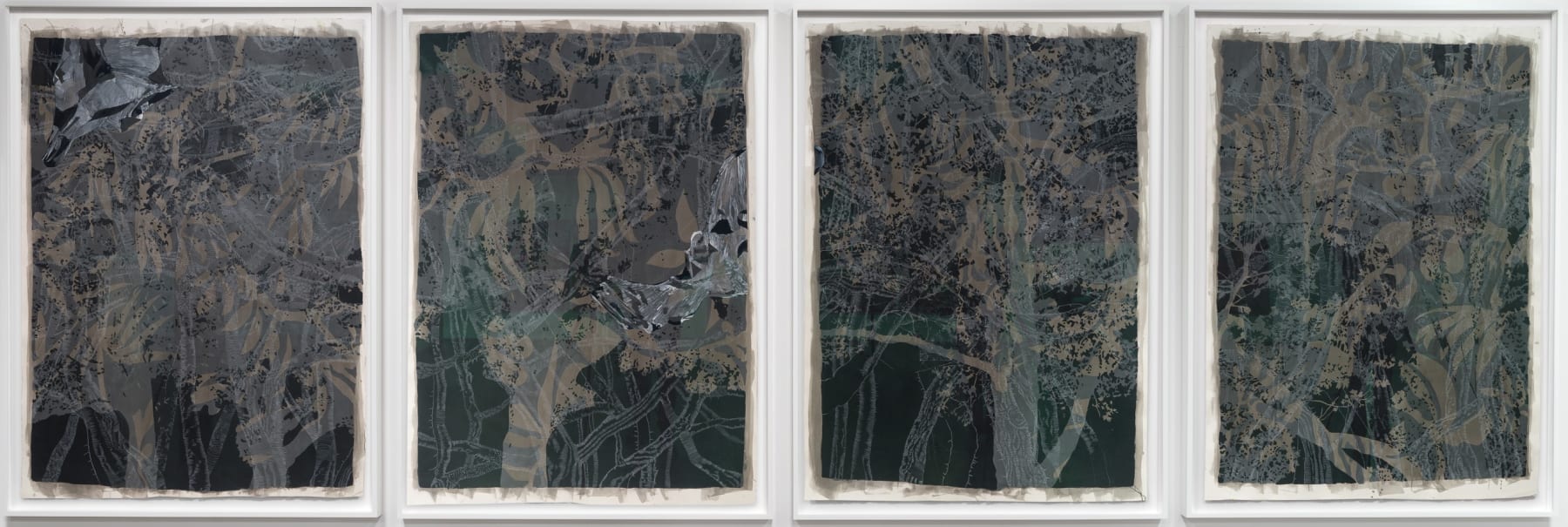David Antonio Cruz
193 x 586.7 cm
76 x 55 1/2 in (each framed panel)
193 x 141 cm
Further images
icanfeelyoulookingbackatme_cause'youseemenow,seemenow,theyallseemenow, is a four-panel work on paper with ink, flashe paint, and wax pencil. The drawing is multi-layered: the light grey motif outlines the countryside of Puerto Rico based on the artist's memories of his grandparents' land; the dark grey layer offers a silhouette of a tree line path in Greenmount cemetery in North Philadelphia; a haunting top layer depicts the artist with his chosen family, including two childhood friends from North Philadelphia, Archel and Kenny, and his sister--they are emerging and disappearing behind ceiba trees in wax pencil across the paper's surface. The ceiba tree is native to tropical and subtropical areas of the Americas, Mexico and the Caribbean, and tropical West Africa. Ceiba is a word from the Taíno language meaning "boat." Taíno is an extinct Arawakan language that the Taíno people of the Caribbean spoke.
In the second panel of the drawing - the only one without people - deploys the shape of a Ceiba tree to create a map of North Philadelphia, triangulating Board Street, Erie Avenue, and Rising Sun Avenue. A pair of sneakers dangles from a branch (Erie Avenue) - sometimes considered a territorial marker, and a common fixture of the neighborhood when the artist grew up there in the 80s.
The cemetery was opened around 1875. Much like the neighborhood where it is situated, the ethnicity of the people buried in the cemetery has changed over the years. Some of the oldest graves from the early 1900s have German names, Irish, and Polish. The newer graves include those with ancestry from various Asian and Latin American countries. The artist's parents and extended family are buried in the cemetery.











